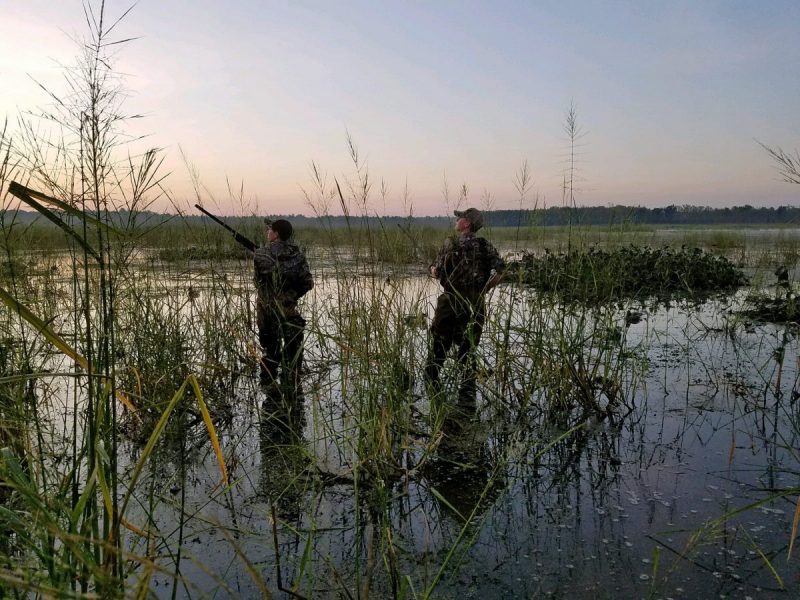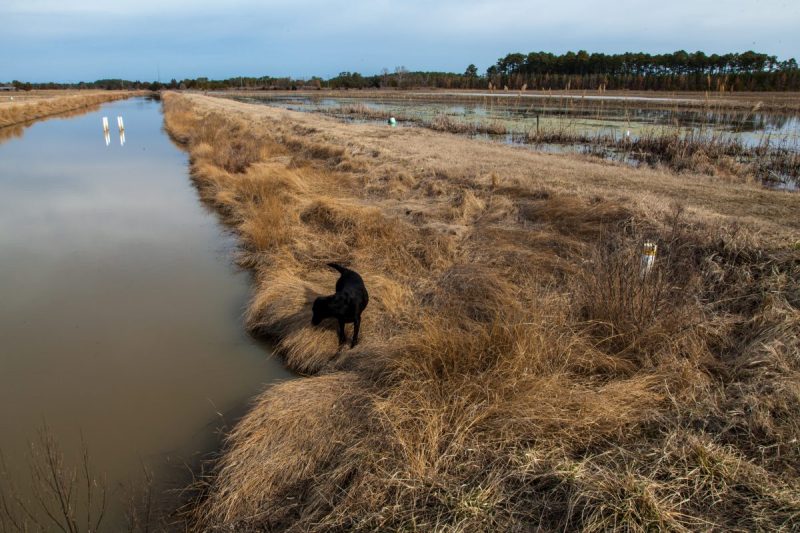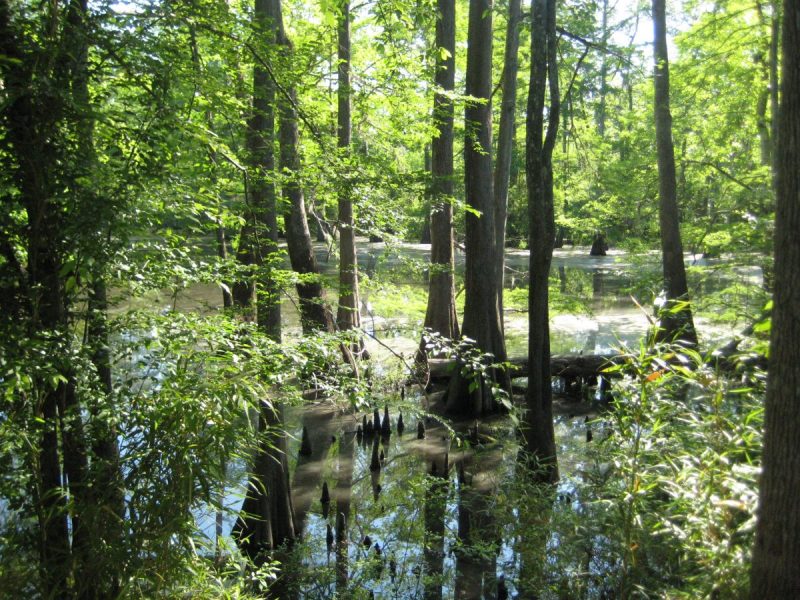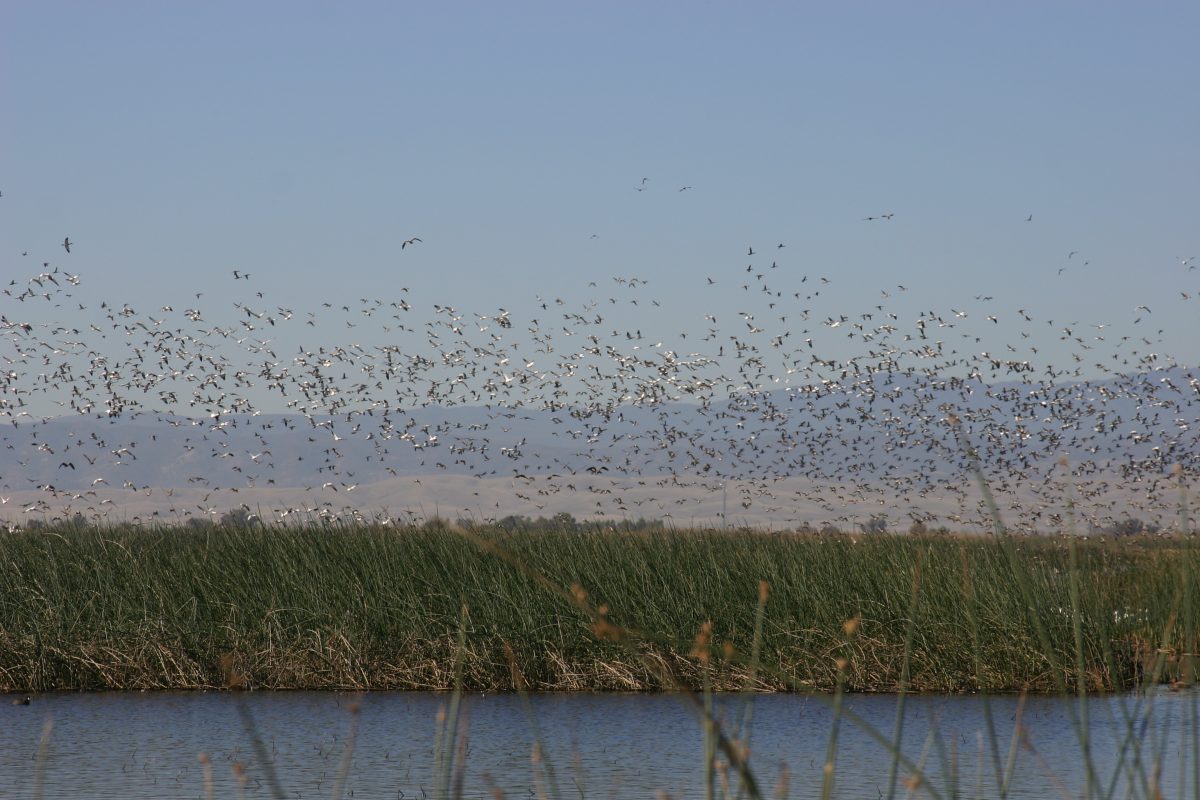President Theodore Roosevelt’s designation of Florida’s Pelican Island as the first National Wildlife Refuge in 1903 placed a high value on our nation’s wetlands and their wildlife, setting a precedent for generations to come. Since then, other administrations have continued Roosevelt’s legacy by expanding upon it.
In 1989, President George H.W. Bush signed into law the North American Wetlands Conservation Act (NAWCA), which set aside critical funds for wetlands conservation not just in the United States but across the entire continent. The act authorized the creation of a wetlands habitat program, administered by the U.S. Fish and Wildlife Service, that provides matching grants for projects designed to protect and restore wetland habitats for migratory birds and other wildlife here and in Canada and Mexico.
“Wetlands are a key part of our natural infrastructure and are essential for improving water quality, avoiding or reducing flooding impacts from storms, replenishing groundwater and more. They are often described as ‘nature’s kidneys.’”
NAWCA grants help not only enhance wetlands habitat and bird populations — research suggests waterfowl populations have increased upwards of 50 percent since its enactment — but also sustain local economies and outdoor traditions like hunting, fishing, bird watching and family farming. In 2019, NAWCA celebrated its 30th anniversary, and although its success is widely acknowledged, it still faces some hurdles to its survival.
The Senate recently passed the America’s Conservation Enhancement (ACE) Act with unanimous support — a measure that reauthorizes NAWCA until fiscal year 2025 at $60 million annually. The legislation is now awaiting approval from the U.S. House of Representatives.

In recognition of World Wetlands Day on February 2, we wanted to highlight the benefits of North American wetlands and the legislation largely responsible for their conservation. We recently sat down with Nick Wiley, chief operations officer at Ducks Unlimited, a nonprofit organization focused on wetlands and waterfowl conservation, to learn more about NAWCA, its legacy and the importance of wetlands.
Why is NAWCA important for conservation as well as outdoor recreation?
NAWCA is focused on protecting and restoring critical wetland habitats throughout North America, with a particular focus on providing needed habitat for wetland-associated migratory birds. Wetland habitats are essential to ensuring the survival of these bird species, along with other wildlife that also depend on wetlands. These areas are also highly prized as areas for recreation. Bird watching and waterfowl hunting, in particular, benefit from wetlands.
What role do wetlands play in the natural world?
Wetlands are a key part of our natural infrastructure and are essential for improving water quality, avoiding or reducing flooding impacts from storms, replenishing groundwater and more. They are often described as “nature’s kidneys.”
Where wetlands have been lost, the negative impacts associated with landscape change are often more acutely felt. Maintaining and restoring wetlands on the landscape will be increasingly important to create resilience to buffer the effects of climate change, especially in those areas where we may experience more extreme swings in rainfall and drought patterns in the future.

Congress is considering reauthorizing NAWCA until FY 2025 at $60 million annually. What would the reauthorization mean for wetlands and waterfowl conservation? Is this funding sufficient to support efforts here and in Mexico and Canada?
We all should be extremely grateful to Congress for continuing this important program. The need for wetland conservation throughout North America far exceeds the funding level authorized, but the dollars appropriated will be used effectively on the landscape to deliver meaningful wetland conservation important to all Americans. Robust partnerships that bring matching funds to the table also provide a key ingredient for stretching NAWCA funding to accomplish as much as possible on the ground.
Moreover, the continental nature of this program is extremely critical for addressing the habitat needs of migratory birds that depend on habitat being available throughout the continent. There is strong support and justification to continue allocating NAWCA funding for important conservation efforts in Canada and Mexico, as well as right here in the U.S.
Why is collaboration at the local, national and international levels — among agencies, organizations, businesses, governments and private landowners — a critical component of NAWCA?
Addressing the continental needs of waterfowl and other migratory birds is a massive undertaking far beyond the capabilities of any one government agency, conservation organization or private enterprise. The only hope of making a meaningful impact is through combined and collaborative efforts involving all who care about conservation. NAWCA is elegantly designed to encourage and reward such collaboration, which is absolutely critical for making the progress so vitally needed for these migratory birds, all to the benefit of society as a whole.
Every dollar of a NAWCA grant must be matched one-to-one by non-federal sources, but contributions often exceed match requirements. To what do you attribute NAWCA’s popularity and success?
NAWCA is a partnership program with policy and direction set by the North American Wetlands Conservation Council in accordance with the act. The program is designed to encourage partnerships to address the most critical science-based needs by delivering habitat on the landscape. The results are tangible, on-the-ground improvements that can be enjoyed by all. This process makes the program effective, popular and in high demand. Competition for the dollars available can be fierce, which keeps the bar high and helps ensure the continuing success of the program.

What role do nonprofit organizations like Ducks Unlimited play in supporting NAWCA? Specifically, how does Ducks Unlimited contribute to this effort?
Ducks Unlimited is very proud to be an active partner in the NAWCA program and a strong advocate for the program in the halls of Congress. NAWCA is closely tied to our mission as an organization, and we do all that we can to ensure the continued success of the program. All partners engaged in NAWCA have a role to play in keeping the program strong and helping Congress understand why it is worthy of continuing.
We also work actively to raise funds and build partnerships to match NAWCA funds so that habitat projects can be implemented successfully and so that we can demonstrate the effectiveness of NAWCA funds for delivering meaningful and lasting conservation on the landscape.
What impact has NAWCA had over the years?
There are 29.8 million reasons to appreciate NAWCA. That is how many acres of wetland-associated habitat have been impacted by this program over the last 30 years. Every one of those acres has provided some degree of benefit to the wildlife and the communities that utilize them.
We have lost about half of the wetlands we once had in the U.S. and that has come with a grave cost to society. NAWCA is working effectively to help offset that impact and reconnect people to the values of wetlands and the essential role they play in our quality of life.





